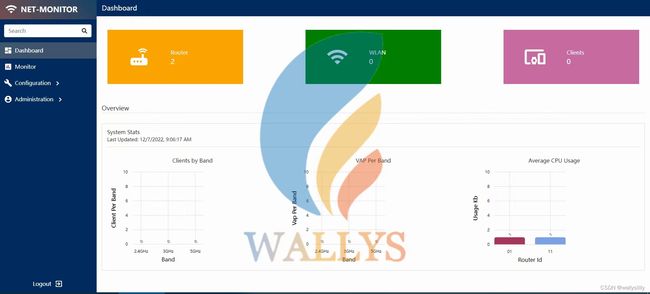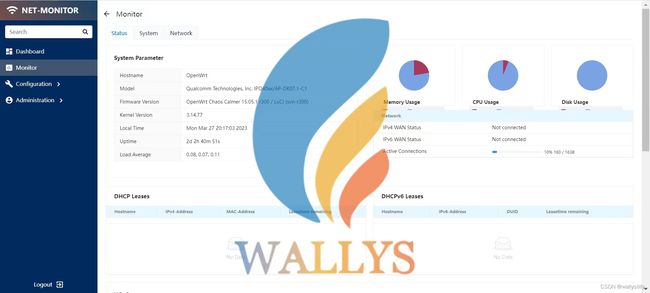IPQ4019 IPQ4029 11AC 20KM Transfer Wallys|AP Controller Devices|DR40x9
IPQ4019 IPQ4029 11AC 20KM Transfer Wallys|AP Controller Devices|DR40x9
What is AP Controller?
An AP controller, or access point controller, is a network device that manages and monitors the operation of wireless access points (APs) in a wireless network. AP controllers provide centralized management, configuration, and monitoring of multiple APs, simplifying network administration and enhancing network security.
AP controllers are commonly used in large-scale wireless networks, such as those found in businesses, schools, and public spaces. In these networks, multiple APs are required to provide coverage over a large area, and managing each AP individually can be time-consuming and error-prone. An AP controller provides a single point of control for all APs in the network, enabling administrators to manage them all from a single location.
There are several benefits to using an AP controller in a wireless network. First, an AP controller simplifies network administration by providing a single point of control. Instead of managing each AP individually, administrators can use the AP controller to manage all APs in the network from a single location. This reduces the risk of configuration errors and ensures consistency across the network.
Second, an AP controller can enhance network security by providing centralized monitoring and control. The controller can detect and respond to security threats, such as rogue APs or unauthorized access attempts, in real-time. This helps to prevent security breaches and protect sensitive data.
Finally, an AP controller can improve network performance by optimizing the operation of APs in the network. The controller can dynamically adjust settings such as transmit power and channel selection to minimize interference and maximize throughput. This can help to ensure that the network operates at peak performance and provides users with a reliable and fast wireless connection.
Applications for AP controllers
There are many applications for AP controllers in a wireless network. One common application is in enterprise networks, where AP controllers are used to manage large numbers of APs across multiple locations. In these networks, administrators can use the AP controller to configure and monitor APs in remote locations, reducing the need for on-site visits.
Another application for AP controllers is in public wireless networks, such as those found in airports, hotels, and other public spaces. In these networks, an AP controller can provide centralized control and monitoring, ensuring that the network is secure and providing users with a reliable connection.
AP controllers are also used in educational networks, where they are used to manage large numbers of APs across multiple campuses. In these networks, an AP controller can provide centralized management and monitoring, enabling administrators to quickly identify and respond to network issues.
In summary, an AP controller is a valuable tool for managing and monitoring wireless networks. It simplifies network administration, enhances network security, and improves network performance. With applications in enterprise, public, and educational networks, an AP controller is an essential component of any large-scale wireless network.
Wallys AP Controller Webpage
Dashboard
The dashboard interface provides a comprehensive overview of the network's performance metrics, including the number of routers, WLANs, and clients currently connected. In addition, the interface offers detailed insights into the network's utilization, such as clients per band, VAP per band, and average CPU usage, allowing for efficient management of the network's resources.
Monitor
The monitor interface provides network administrators with a comprehensive view of the managed routers, including their serial numbers, names, flags, firmware versions, IP addresses, MAC addresses, and up-time. Clicking on a specific router will provide further details in a separate page, enabling network administrators to effectively manage and troubleshoot their networks.
Detail Page
The detail interface allows network administrators to manage the status, system, and network settings of the routers.
If you require further information or have any inquiries, please do not hesitate to contact our sales team. We would be happy to provide you with additional details and assist you with any questions you may have.
Hardware for Wallys AP Controller:IPQ4019/IPQ4029 CHIPSET DR40x9 routerboard
The Wallys' AP controller is compatible with the DR40x9 routerboard, which is designed for industrial-grade wireless networking applications.
The DR40x9 routerboard features the powerful IPQ4019/IPQ4029 chipset, which enables high-speed data transfer and reliable wireless connectivity.
The DR40x9 routerboard is integrated with two 2x2 5G high-power radio modules and two 2x2 2.4G high-power radio modules, providing comprehensive wireless coverage across both 5GHz and 2.4GHz frequency bands. It supports a wide range of frequencies, from 4.940GHz to 5.825GHz for the 5GHz band, and from 2.400GHz to 2.482GHz for the 2.4GHz band.
The DR40x9 routerboard also features two 5G MMCX connectors and two 2.4G MMCX connectors, which allow for flexible antenna configurations. It supports a variety of bandwidths, including 5MHz, 10MHz, 20MHz, 40MHz, and 80MHz, providing users with a range of options to optimize their wireless network performance.
The DR40x9 routerboard is compatible with the 11ABGN/AC wireless standards, supporting fixed data rates for maximum compatibility and stability. It also complies with RoHS standards, ensuring a high level of protection for human health and the environment.
For more information about DR40x9:
PRODUCTS_Wallys Communications (Suzhou ) Co., LTD
Wallys' AP controller firmware supports all the modules of Quectel, a leading provider of wireless communication modules and solutions. This ensures that the DR40x9 routerboard is compatible with a wide range of wireless devices and can be seamlessly integrated into a variety of network environments.
In summary, the DR40x9 routerboard is a powerful and versatile device that is compatible with Wallys' AP controller. Its industrial-grade hardware and wide range of features make it an ideal choice for wireless networking applications that require high-speed data transfer, reliable connectivity, and flexible configuration options.
Wallystech has over 10 years of experience in research and development, with expertise in Linux and WiFi protocols. They specialize in developing software for Qualcomm chips, including drivers, kernels, and other important software modifications and compilations, in order to meet the diverse WiFi functional requirements of their customers.
In addition to their software expertise, Wallystech also boasts a strong hardware design team. Their team of experienced professionals recognizes that RF circuit design and baseband are the most challenging aspects of hardware design. Wallystech has achieved zero errors in signal integrity, even when it comes to complex tasks like frequency conversion of network cards, from 2.4 GHz to 900 MHz.
Wallystech has provided their innovative technology solutions to notable clients such as TIP, Facebook, and Openwrt. For more information, please contact [email protected] or visit our website at Wallys 802.11ax, wifi 6, IPQ4029,IPQ4019,IPQ6018,IPQ6000.Router board, wireless card.Access Point..



